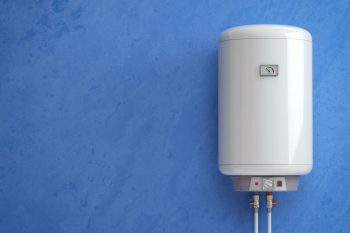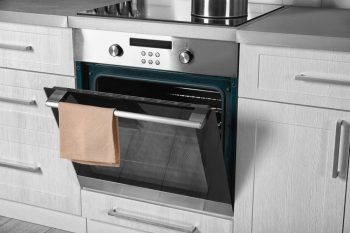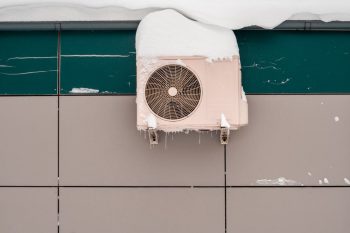
If your GE washer is not functioning as it should, the motor might be the culprit. But how can you tell if the GE washer motor is bad? In this comprehensive guide, we will walk you through the steps to diagnose a potentially faulty GE washer motor, the common signs of a failing motor, how to test it, and what steps to take if your motor is indeed bad.
You can tell if your GE washer motor is bad by looking for signs like the washer not pumping or spinning, the drum not turning, spluttering noise, sparking from the motor area, or signs of overheating. You can also diagnose a bad motor by checking for error codes, inspecting the motor, testing the motor windings and sensor, examining the drive motor, and using the test mode if your washer has this feature. If your motor is faulty, consider the cost-effectiveness of repair vs replacement, and whether to DIY or hire a professional.
Signs of a Failing GE Washer Motor
Before we delve into the diagnostic process, it’s important to recognize the common signs that a GE washer motor might be failing:
- The washer won’t pump or spin: This could indicate motor issues.
- The washer pumps but doesn’t spin: This could also be a sign of motor problems.
- The drum isn’t turning: If the machine fills and drains normally but the drum isn’t turning, it could indicate worn carbon brushes or other motor issues.
- The washer makes a spluttering noise: This could be a sign of motor problems.
- There is sparking from the motor area: This could indicate motor issues.
- The motor shows signs of overheating: This could mean the motor is defective or burned out, causing the tub not to spin.
Diagnosing a Bad GE Washer Motor
If you are experiencing any of these symptoms, it’s time to inspect your washer motor. Here are some steps you can take:
Check for Error Codes
Many GE washers have a built-in self-diagnostics system that displays error codes related to motor issues. Consult your washer’s manual to see if your washer has this feature and how to access it. If there are any error codes, refer to your manual or online resources to understand their meaning and possible solutions.
Inspect the Motor
Unplug the washer and remove the service panel to access the motor. Check for any visible damage, loose connections, or burnt components.
Test the Motor Windings
You can test the motor’s windings using a multimeter. Set the multimeter to the continuity setting and touch each probe to one terminal each. The motor should show little resistance (a reading of zero or close to zero). If the motor fails this test, it might be faulty.
Check the Motor Sensor
Some GE washers have a motor sensor that can cause the motor not to run if it fails. To test the motor sensor, disconnect the motor plug and check the sensor from the control.
Examine the Drive Motor
The drive motor helps the drum to spin during a wash cycle, so if it becomes faulty, your washer will not be able to spin. Inspect the drive motor for any signs of damage and replace it if necessary.
Test the Motor in Test Mode
Some GE washers have a test mode that allows you to test the motor’s functionality. Consult your user manual to see if your washer has this feature and how to access it.
Repair or Replace?
If your motor is indeed faulty, you might be wondering whether it’s more cost-effective to repair it or replace it. The cost to replace a GE washer motor typically ranges from $300 to $500. However, the overall cost of repairing a GE washing machine, including labor, can vary from $125 to $400.
As a general rule, if the repair cost is more than 50% of the price of a new washer, it might be more economical to replace the appliance. The average cost of a new front-loading washing machine starts at about $700.
DIY or Professional Help?
If you’re confident in your DIY skills, you can certainly attempt to replace a bad GE washer motor yourself. However, if you’re unsure or uncomfortable performing the repair, it’s a good idea to hire a professional appliance repair technician. The average cost of washing machine repair ranges from $100 to $400, depending on the specific issue and the technician’s hourly rate.
Prolonging the Life of Your GE Washer Motor
To prolong the life of your GE washer motor, consider the following tips:
- Avoid overloading the washer.
- Use the correct detergent and amount.
- Regularly clean the filter.
- Run full loads to reduce wear and tear on the motor.
- Ensure that the machine is balanced.
- Perform regular maintenance washes.
- Replace hoses every five years.
- Follow the manufacturer’s recommendations.
By following these guidelines, you can help keep your GE washer running efficiently and potentially avoid costly repairs or replacements. Remember, when in doubt, always consult a professional.
Frequently Asked Questions
What are the common error codes in GE washers related to motor issues?
Some common error codes related to GE washer motor issues include E23 (Drain pump relay on control board failed), E31 (Washer is overfilling), E67 (Input voltage on microprocessor incorrect), and E75 (Water temperature sensor circuit). Always refer to your user manual or contact GE support for the specific meaning and troubleshooting steps for your model’s error codes.
Where can I find a reliable technician to repair or replace my GE washer motor?
You can find a reliable technician through GE’s official website. They have a directory of certified technicians. Alternatively, you can also check local listings or ask for recommendations from family and friends.
Can I use any detergent in my GE washer?
It’s best to use a detergent that’s specifically designed for high-efficiency (HE) washers. These detergents produce fewer suds and are more compatible with the low-water levels typical of HE machines. Using the wrong type of detergent can cause excessive suds, which can lead to residue buildup and potentially damage the motor.
How often should I clean the filter on my GE washer?
It’s recommended to clean the filter on your GE washer once a month. Regular cleaning helps prevent buildup that can restrict water flow and strain the motor.
How can I ensure that my washing machine is balanced?
To ensure your washing machine is balanced, adjust the machine’s front legs and lock the locknuts up against the body of the machine after leveling. Also, place a level on top of the machine to check that it’s level from front to back and side to side.












